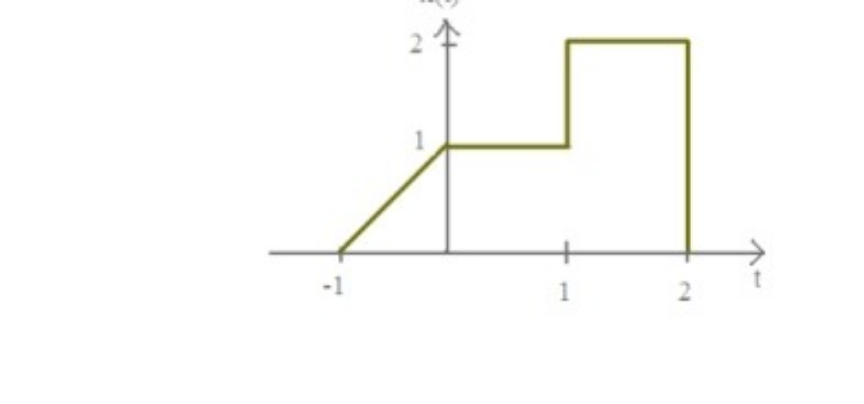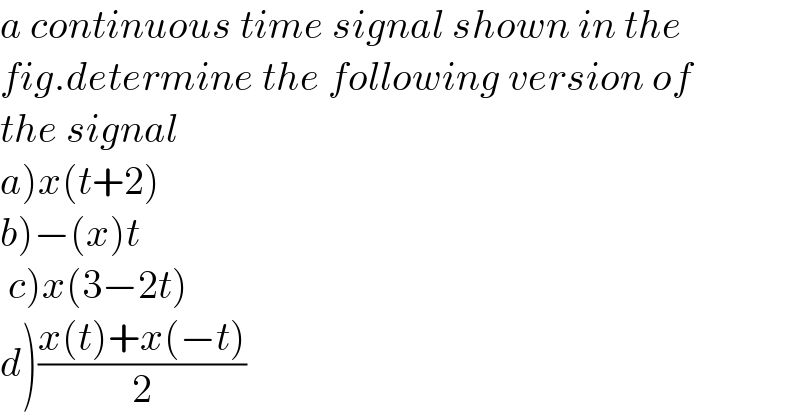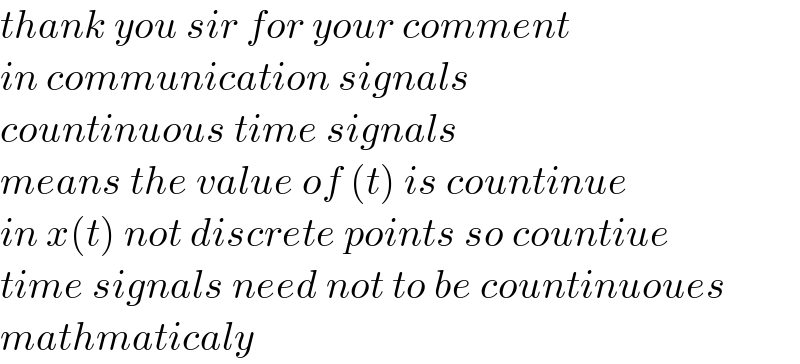Question Number 163978 by Eric002 last updated on 12/Jan/22

Commented by Eric002 last updated on 12/Jan/22

$${a}\:{continuous}\:{time}\:{signal}\:{shown}\:{in}\:{the} \\ $$$${fig}.{determine}\:{the}\:{following}\:{version}\:{of} \\ $$$${the}\:{signal} \\ $$$$\left.{a}\right){x}\left({t}+\mathrm{2}\right)\:\: \\ $$$$\left.{b}\right)−\left({x}\right){t}\:\: \\ $$$$\left.\:{c}\right){x}\left(\mathrm{3}−\mathrm{2}{t}\right)\:\:\: \\ $$$$\left.{d}\right)\frac{{x}\left({t}\right)+{x}\left(−{t}\right)}{\mathrm{2}} \\ $$
Commented by JDamian last updated on 12/Jan/22
A "continuous" time signal in the popular meaning I guess, because that x(t) for t=1 is not continuous in the mathematical meaning
Commented by Eric002 last updated on 13/Jan/22

$${thank}\:{you}\:{sir}\:{for}\:{your}\:{comment} \\ $$$${in}\:{communication}\:{signals}\: \\ $$$${countinuous}\:{time}\:{signals} \\ $$$${means}\:{the}\:{value}\:{of}\:\left({t}\right)\:{is}\:{countinue}\: \\ $$$${in}\:{x}\left({t}\right)\:{not}\:{discrete}\:{points}\:{so}\:{countiue} \\ $$$${time}\:{signals}\:{need}\:{not}\:{to}\:{be}\:{countinuoues} \\ $$$${mathmaticaly} \\ $$
Commented by Eric002 last updated on 13/Jan/22

Commented by Eric002 last updated on 13/Jan/22

$${for}\:{example}\:{a}\:{is}\:{countinuous}\:{time}\:{signal} \\ $$$${and}\:{b}\:{is}\:{discrete}\:{time}\:{signal} \\ $$
